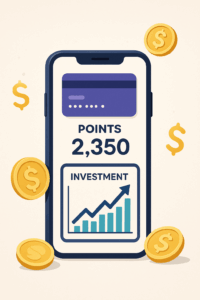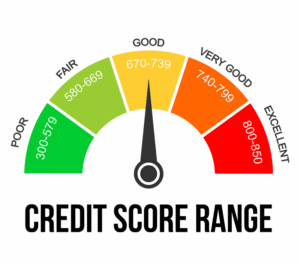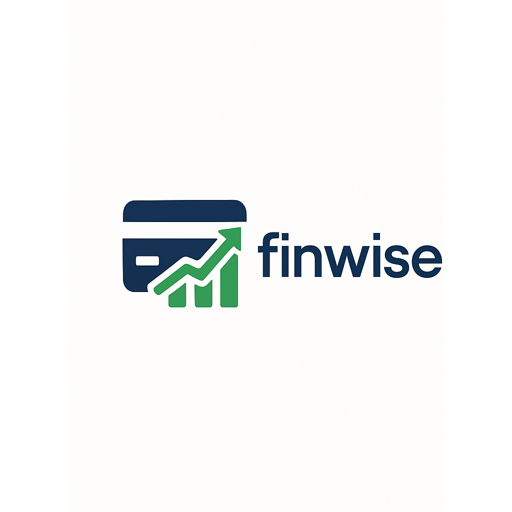
Credit Card Points and Investment: How to Turn Rewards into Real Wealth
For many Americans, credit cards have become part of daily life — offering convenience, safety and, most appealingly, rewards. Each year millions of Americans earn points, miles, cashback and other rewards on everyday purchases. But what if you don’t fritter away these rewards, and instead use them as a base to begin investing? By 2025, that’s not just viable — it’s a prudent, achievable strategy for creating long-term wealth.
This article will teach you how to maximize your credit card rewards, translate those rewards into actual investments and help you avoid common pitfalls that can stop you in your tracks. Whether you are new to credit cards or already have some experience with them, these ideas will help you turn everyday spending into a step toward financial freedom.

Why Credit Card Rewards Matter for Investors
Credit card rewards are not mere bonuses; they’re opportunities. When done wisely, they can even become meaningful additions to your investment portfolio. But if rather than spending you redirect the points or cashback you earn from those less-than-lucrative activities into investments, you’re creating a source of passive wealth accumulation needs no extra work and carries no additional risk.
Advantages of Investing in Credit Card Rewards:
- More money, no extra spending: Rewards come from spending you’d do anyway.
- Faster way to build wealth: Small amounts over time make sense all the time.
- Promotion of good financial habits: Incentive-based investing encourages budgeting and tracking.
Choosing the Right Credit Card
The journey starts with the choice of your credit card towards investing. Not all cards are appropriate — some provide travel rewards or merchandise, which are less directly valuable to investors. Instead, focus on:
Cashback Cards
These are cards that allow you to take a certain percentage of your purchases and return it to you in the form of cash that can be deposited into your bank account or your investment account. Look for:
Citi® Card: 2% cashback on all purchases (1% cashback when you buy, 1% when you pay).
Flexible Points Cards
Certain cards, such as the Chase Sapphire Preferred, allow points to be redeemed for cash or for investments through particular programs (though the value of the points used in this way typically is lower).
Cards with Direct Investment Features
Some cards will now let you deposit your rewards payment directly into brokerage or retirement accounts, making investing an effortless endeavor.
Maximizing Credit Card Rewards
Now that you have the right cards, it’s time to optimize your strategy to get the most out of your rewards:
- Consolidate Your Spending
Put most purchases on your main reward card. The more you charge (responsibly) the more rewards you collect.
- Take Advantage of Bonus Categories and Welcome Offers
Watch bonus categories (such as groceries, gas or online shopping) and run with them, and leverage sign-up bonuses, which might be a few hundred bucks if you do it right.
- Leverage Shopping Portals and Stack Offers
Many card issuers have relationships with online shops that provide extra rewards when you click through their site before you buy anything.
- Automate Reward Redemption
If possible, arrange for rewards to be automatically deposited in a bank or investment account. This eliminates any friction and ensures that you’re always putting your rewards to work.
How to Spend Your Credit Card Rewards
Now that you’re accruing rewards like a pro, it’s time to make the most of them:
- Stocks, ETFs, or Mutual Funds Investment
Habit: Deposit your cashback or rewards dollars into a brokerage account. A lot of platforms allow you to invest with as little as $1, and even small contributions over time can snowball because of compounding.
- Boost Your Retirement Accounts
A few cards will let a customer to direct the money into an IRA or a Roth IRA. And this is particularly potent due to the tax advantages of retirement accounts.
- Build an Emergency Fund
If you don’t already have one, use your rewards to build an emergency fund that can cover three to six months’ worth of living expenses. That makes you feel secure and enables you to invest with confidence.
- Launch A Side Hustle Or Invest In Education
You can use credit card rewards to pay for courses and certifications, put them toward small business expenses — investing in yourself is one of the best uses of extra funds.
Real-Life Example: Turning Rewards Into Wealth
Say you spend $2,000/month with your credit card (on things you’d be buying anyway) and the card gives you 2% cashback. That’s $40 a month, or $480, that you are paying annually. Let’s say you invest this sum every year in a low-cost S&P 500 index fund, and the market averages 7% returns over the long run, after 10 years you’ll have more than $6,700 — just from the rewards that you would have otherwise used on gift cards or travel.
Pro Tips for Getting the Best Results
Pay your balance in full each month: Carrying a balance incurs interest charges that negate any rewards.
Don’t overspend: Don’t make excessive purchases to get rewards.
Check in on card terms every year: Reward programs change and your card might not be the best fit anymore.
Cash out with gift cards or direct deposit: You get more flexibility and a higher value (in general) than you would for merchandise.
Mistakes to Avoid
Disregarding fees: A number of rewards cards carry annual fees. Ensure that the value you receive in rewards outweighs the fee.
Not taking advantage of rewards: Allowing your points to expire or forgetting to cash them in is wasting free money.
Falling for perks: Concentrate on the rewards that can aid your investing efforts, not the flashy extras.
Final Thoughts
It’s not hard to make your credit card points worth real money in 2025. With the right card, some controlled spending and a savvy investment plan, you can turn your everyday purchases into a driving force behind future financial stability. Begin modestly, stick with it, and look as your efforts — and your investments — compound alongside the passing years.
Our Post

The Note: How Decelerating U.S. Economic Growth Affects Using Consumer Credit


